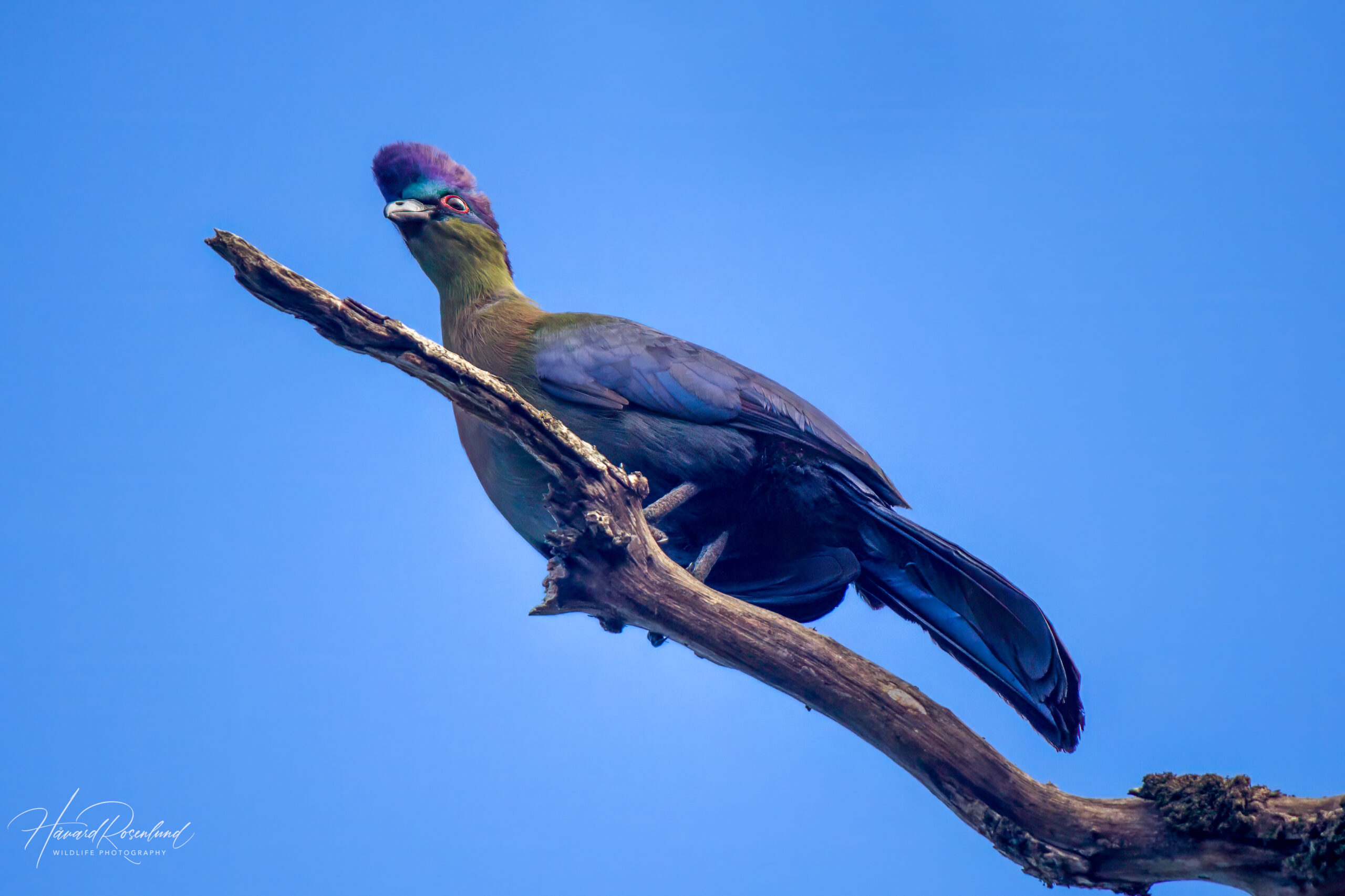Description
The purple-crested turaco (Gallirex porphyreolophus) is a striking bird native to East and Southeast Africa. It measures approximately 40-42 cm (15.7-16.5 in) in length, with a distinct deep purple-colored crest and green and purple plumage. Its red wing patches are conspicuous in flight. Unlike most birds, turacos have unique copper-containing pigments in their feathers, which give them their vibrant green and red colors. This species is distinguished from similar turacos by its unique coloration and larger size. It has a distinct call, often described as a deep and resonant “kow-kow-kow,” which differs from its relatives. It is the national bird of Eswatini (formerly Swaziland).
Diet & habitat
The purple-crested turaco inhabits dense woodland and evergreen forests. It’s an arboreal species, meaning it spends most of its life in trees. These birds are known for their agility, capable of moving swiftly through dense canopies with ease. It feeds primarily on fruits, especially wild figs and other forest fruits, but also consumes leaves, buds, and flowers. Unlike many birds, turacos can digest green leaves due to their unique digestive system.
Nesting
Breeding season varies depending on the region, typically occurring during the rainy season. The species is known for its monogamous breeding behavior, with pairs bonding for life. Nests are built in trees, and females usually lay 2-3 eggs. Both parents participate in incubation, which lasts about 22-24 days. Fledging occurs approximately 3-4 weeks after hatching, with chicks becoming fully independent shortly thereafter.
Status
The purple-crested turaco has a large range and is fairly common in many areas. However, it faces threats from habitat loss and fragmentation due to deforestation and urbanization, and numbers are believed to be decreasing. It is currently classified as least concern on the IUCN Red List.






